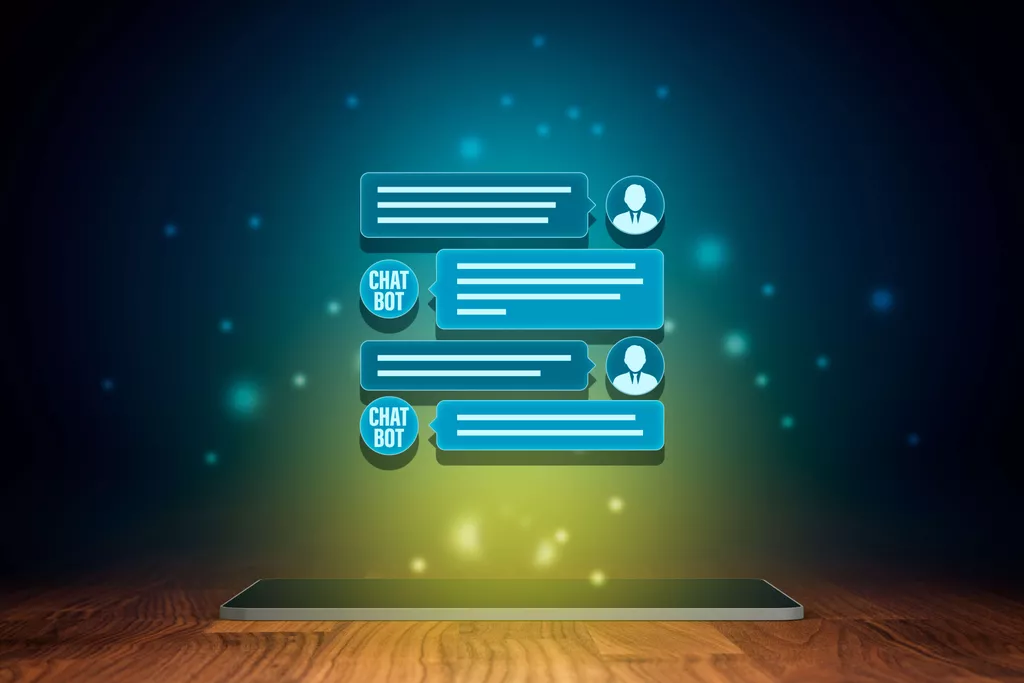The popularity of conversational AI is growing, not only for business purposes but also in everyday lives. When computers communicate with people, engineers must do their best to make this interaction look like a human.
Whether you’re chatting with a chatbot, answering an automated email, or chatting with a virtual assistant, invisible computers work hard to interpret what you say (a process called «intent classification»), determine the appropriate response, and respond naturally understandably for people way. Let’s talk about what is an example of conversational AI.
Some words about conversational AI
Conversational AI is a kind of artificial intelligence that allows consumers to interact with computer programs like people. Conversational AI mostly takes the form of advanced chatbots or artificial intelligence chatbots that are different from traditional chatbots. Such technology also improves the performance of standard voice assistants and virtual agents. The technologies behind conversational AI are nascent but are rapidly improving and expanding.
An AI-enabled conversational chatbot answers frequently asked questions, solves various problems, and makes small talk – as opposed to the more limited capabilities of a human conversation with a standard chatbot. While a static chatbot is typically hosted on a company website and limited to text interaction, AI conversational bots are meant to be accessed and performed through different media, including audio, video, and text.
How does conversational AI work?
Conversational AI combines natural language processing (NLP) and machine learning (ML) with familiar static forms of interactive technologies such as chatbots. This combination is used to respond to users through human-like interaction. Static chatbots are rule-based and provide the user with predefined responses. On the other hand, the conversational AI model uses NLP to analyze and interpret human speech for meaning and machine learning to gain new information to improve future interactions.
- NLP processes large amounts of unstructured human language data and creates a structured data format so that machines may understand information to make decisions and provide answers. To better understand NLP, consider two crucial elements in conversational AI: natural language understanding (NLU) and natural language generation (NLG).
- NLU is what allows a machine or application to understand language data given context, intent, syntax, and semantics and, as a result, determine the intended meaning.
- NLG is the process by which a machine generates text in human-readable languages, also called natural languages, based on all input. The goal is to explain structured data to understand.
There are several apparent problems with the development of conversational AI. First, conversational AI models have been trained primarily in English and have yet to fully adapt to users worldwide by interacting with them in their native languages. Secondly, companies interacting with customers using AI chatbots must have security measures to process and store transmitted data.

The impact of conversational AI on your business
Conversational AI is a profitable solution for many companies. If you know what is an example of conversational AI and consider it for your business, here are some of the advantages you should be aware of:
- Automatic support and analysis: сonversational AI may solve customer requests without human intervention. Such technology saves you money and helps you better understand your customers. How? With advanced conversational AI, you can access various technologies that automatically track communication, customer behavior, and other parameters. Such snippets of analysis may help you better understand your customers’ interests.
- More authentic than a chatbot: traditionally, a chatbot needs users or customers to enter the exact keyword to get the correct answer. It’s the primary indicator by which the client may determine when he is interacting with bots, which usually worsens the user experience. Unlike a chatbot, conversational AI can learn and adapt to complex queries and conversational experiences over time. Thus, clients do not need to enter predefined requests and will not receive automatic messages.
- Cost-effective: hiring and maintaining a customer service department can be expensive. And costs may continue to rise as the business expands. Instead of hiring a large team of human agents, you can provide good customer service using conversational AI technology that works like a virtual agent or virtual assistant. You may cut business costs such as infrastructure, salaries, and training without sacrificing customer experience.
Since conversational AI apps are available 24/7, your customers will always be taken care of, which will increase customer engagement. Efficiency allows customers to avoid long waiting periods in the contact center, thereby improving the quality of customer service.
As a result, you will likely see a surge in sales, loyalty, and customer satisfaction. Happy customers also spread the word about your business, earning extra income from referrals.
Examples and use cases of conversational AI
When we think about what is an example of conversational AI, most people tend to be familiar with customer service, chatbots in social networks (bots in Facebook Messenger), and virtual assistants. But there are many other applications for conversational AI. Let’s discuss some other cases:
- Chatbots for lead generation: engaging with a chatbot when the person is browsing your products and services on your website is an excellent option to get his attention.
- Healthcare: conversational AI in healthcare can help patients understand their health concerns and quickly direct them to the right healthcare professionals; it reduces the number of patients waiting in line at contact center operators by eliminating call drop-offs.
- Retail: when customer service agents are unavailable, AI-enabled chatbots can cater to customer needs 24/7, even on holidays. AI chats are available through various mediums and channels, including email and websites.
- Internet of things: standard consumer devices such as Amazon Echo and Apple’s Siri have conversational AI capabilities. AI conversational agents can be interacted with even through intelligent home devices.
- Human resources: conversational AI helps automate the time-consuming process of manually reviewing candidate credentials. As with banking, conversational AI alleviates much of the burden employees face.
- Appointment reservations: chatbots are very effective at these functions if your business needs to book an appointment or make reservations.
- Automating appointment tasks with a chatbot will simplify critical processes in your company.
- Order confirmation and follow-up: automate the purchase confirmation process and inform customers where their order is with a chatbot. Your client prefers to find out this information by texting a chatbot rather than talking to one of their agents.
- Conducting customer satisfaction surveys: another point where your customers would rather interact with a chatbot than with a human is their level of satisfaction. The bot provides the most accurate answers.
Conversational AI platforms with machine learning and natural language processing help your customers find the information they need quickly and conveniently. You can easily personalize your services for every caller (from partner executives to clients of any age) and keep scammers at bay.
More companies are using this AI technology to improve their customer service and other departments such as marketing, sales, and training new employees.
